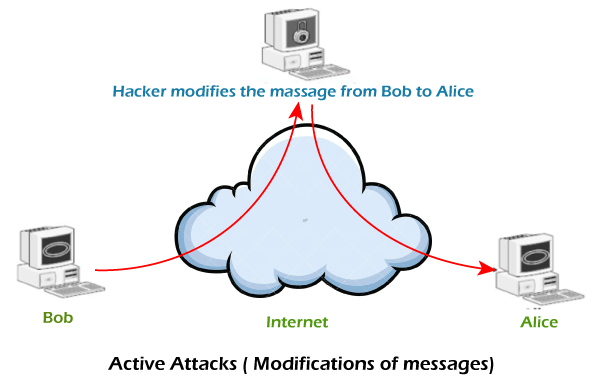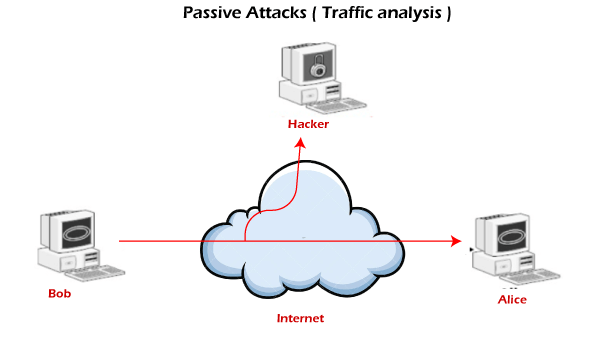This article is going to be very interesting and important for readers that are interested in cyber security. In this article, we are going to discuss two major types of security attacks that are Active attack and Passive attack.
Hope this article will be informative to you, and give you the sufficient information about Active attack, Passive attack, and their comparison. So, without any delay, let's start our topic.
What is a Security attack?
Security attacks jeopardize the system's security. These are the unauthorized or illegal actions that are taken against the government, corporate, or private IT assets in order to destroy, modify, or steal the sensitive data. They are further classified into active and passive attacks, in which the attacker gets unlawful access to the system's resources.
Active attacks
In active attacks, the attacker intercepts the connection and efforts to modify the message's content. It is dangerous for integrity and availability of the message. Active attacks involve Masquerade, Modification of message, Repudiation, Replay, and Denial of service. The system resources can be changed due to active attacks. So, the damage done with active attacks can be harmful to the system and its resources.
In the below image, we can see the process of active attacks.

In active attacks, the victim gets notified about the attack. The implication of an active attack is typically difficult and requires more effort. Active attacks can be prevented by using some techniques. We can try the below-listed measures to prevent these attacks -
- Use of one-time password help in the authentication of the transactions between two parties.
- There could be a generation of the random session key that will be valid for a single transaction. It should prevent the malicious user from retransmitting the actual information once the session ends.
Passive attacks
In passive attacks, the attacker observes the messages, then copy and save them and can use it for malicious purposes. The attacker does not try to change the information or content he/she gathered. Although passive attacks do not harm the system, they can be a danger for the confidentiality of the message.
In the below image, we can see the process of passive attacks.

Unlike active attacks, in passive attacks, victims do not get informed about the attack. It is difficult to detect as there is no alteration in the message. Passive attacks can be prevented by using some encryption techniques. We can try the below-listed measures to prevent these attacks -
- We should avoid posting sensitive information or personal information online. Attackers can use this information to hack your network.
- We should use the encryption method for the messages and make the messages unreadable for any unintended intruder.
Active attack v/s Passive attack

Now, let's see the
comparison chart between Active attack and Passive attack. We are comparing
both security attacks on the basis of some characteristics.
|
On the basis of |
Active attack |
Passive attack |
|
Definition |
In active attacks, the attacker intercepts
the connection and efforts to modify the message's content. |
In passive attacks, the attacker observes
the messages, then copy and save them and can use it for malicious purposes. |
|
Modification |
In an active attack, the attacker modifies
the actual information. |
In passive attacks, information remains
unchanged. |
|
Victim |
In active attacks, the victim gets notified
about the attack. |
Unlike active attacks, in passive attacks,
victims do not get informed about the attack. |
|
System's impact |
The damage done with active attacks can be
harmful to the system and its resources. |
The passive attacks do not harm the system. |
|
System resources |
In active attacks, the system resources can
be changed. |
In passive attacks, the system resources
remain unchanged. |
|
Dangerous for |
They are dangerous for the integrity and
availability of the message. |
They can be dangerous for confidentiality of
the message. |
|
Emphasis on |
In active attacks, attention is on
detection. |
In active attacks, attention is on
prevention. |
|
Types |
Active attacks involve Masquerade,
Modification of message, Repudiation, Replay, and Denial of service. |
It involves traffic analysis, the release of
a message. |
|
Prevention |
Active attacks are tough to restrict from
entering systems or networks. |
Unlike active attacks, passive attacks are
easy to prohibit. |



0 Comments